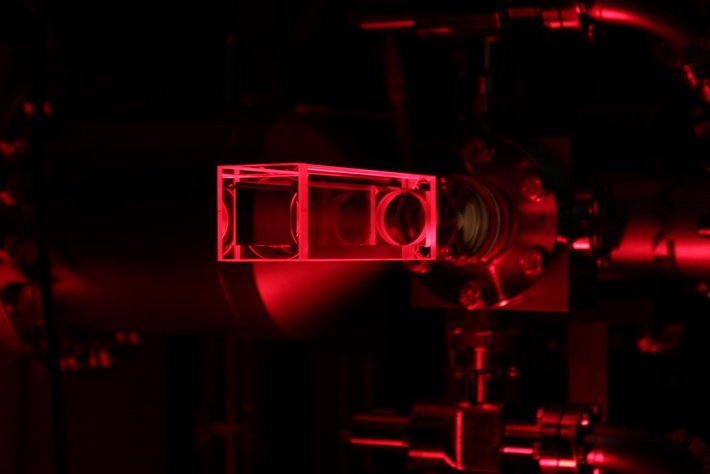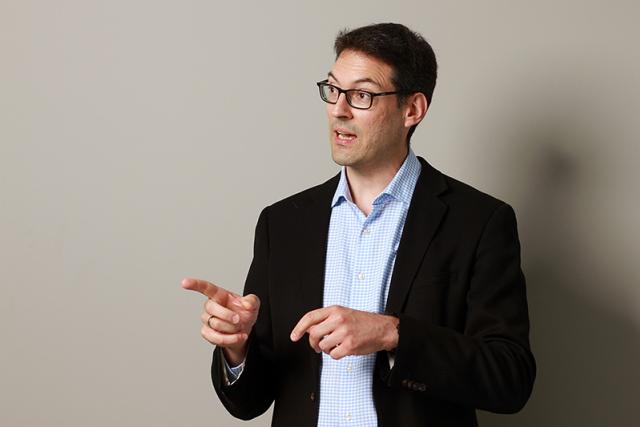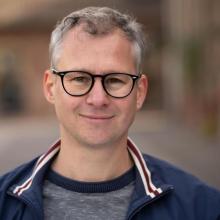

Quantum Year 2025: Welcome to the second quantum revolution
Is quantum physics a closed book to you? Artur Widera has a tip: “You don't have to understand everything. Just accept that some phenomena exist.” The behavior of photons, neutrons, quarks, or bosons, the smallest components of matter and energy, is difficult to grasp. For example, the fact that two particles can be so connected – or, in scientific terms, “entangled” – that a change in one instantly affects the state of the other, no matter how far apart they are, is beyond the imagination of many people. “But experiments clearly show that this is the case,” says the physics professor, who conducts experimental research into quantum phenomena with his research group.
Quantum physics has long been omnipresent
The United Nations has declared 2025 the 'International Year of Quantum Science and Technology'. Experts around the world are currently raising awareness of its significance for the 21st century. Widera explains why the topic is on everyone's lips: “Quantum science itself is nothing new. The first quantum revolution began when physicists such as Max Planck, Erwin Schrödinger, and Werner von Heisenberg proved that particles such as electrons or photons can exist in multiple states simultaneously and behave both as particles – i.e., as small objects with a fixed position and direction of motion – and as waves that propagate and overlap. This, along with the understanding that particles do not absorb or release energy continuously, but in tiny portions called quanta, revolutionized the physical picture of nature and paved the way for developments such as lasers, semiconductors, and microchips.” Quantum physics has therefore long been present in every smartphone, scanner cash register, and LED lamp.
“What is currently being reported under terms such as quantum computers is what we refer to as the second quantum revolution. The aim is to harness specific quantum effects for completely new applications,” explains Widera. Research and development teams are working on controlling phenomena such as superposition or interference – the ability of particles to exist in multiple states simultaneously – and entanglement.
High expectations
Such effects enable, for example, quantum computers that use qubits instead of bits. Thanks to superposition, these smallest units of information can be 0 and 1 at the same time, enabling parallel, faster calculations. Quantum cryptography raises hopes for absolutely secure communication. Since any manipulation of quantum states inevitably changes them, any attempt at eavesdropping would be detected. Quantum sensors are also conceivable: “These could measure brain waves through the skull or monitor the heart of a fetus in the womb,” Widera says, looking to the future. Science can also hope for major advances in areas such as gravitational wave research. “Quantum technologies could make measuring instruments for distortions in space-time during cosmic events such as the merging of black holes much more accurate.”
The sticking point: error rates
Will quantum effects soon make our lives faster and better – or is much of this still just a pie in the sky? “Quantum technology is no longer pure theory,” says Widera. The first quantum computers already exist. At the RPTU, Widera is also working with his colleagues Herwig Ott and Thomas Niederprüm to develop their own quantum processor. This collaborative project, which is funded by the Federal Ministry of Education and Research and also involves the University of Hamburg, the Fraunhofer Institute for Industrial Mathematics ITWM, and other partners from academia and industry, uses laser pulses to entangle atoms as qubits.
“But it will be years before it can be widely used,” says the physics professor, dampening overly optimistic expectations. “High error rates and sensitive quantum states are slowing down widespread application. Stable cooling, vacuum, and laser systems are crucial.” These determine how long the desired quantum states can be maintained, as they are extremely sensitive. “Every technical component has a limitation somewhere that ultimately limits quantum technology. Our research therefore focuses on solutions for generating, maintaining, and specifically utilizing quantum properties in as pure a form as possible.”
Experiments with the light trap
The cliché of the scientist hunched over formulas isn’t completely wrong,” says Widera with a laugh when asked about his day-to-day work. “Thinking through tough problems alone is important. But most of the real progress happens in teams. Research is never a solo act—ideas take shape in conversations and meetings. Sharing knowledge, especially through international networks, is essential for gaining fresh perspectives and spotting blind spots.”
The results of this intellectual work are made tangible with the help of state-of-the-art technology in one of the RPTU's physics laboratories. Measuring instruments connected by cables, lasers, optics – everything here is geared toward the heart of the laboratory: a small glass cell that is part of an airless vacuum apparatus. In a so-called light trap, laser beams fix individual atoms in motionless suspension as tiny gas clouds measuring around 100 micrometers, about the size of a speck of dust. Here, the researchers perform the feat of cooling the atoms to temperatures close to absolute zero (-273.15 °C) using laser cooling – some refer to it as “the coldest place in Rhineland-Palatinate.” In this freezing cold, the particles reveal their quantum mechanical properties. “It's exciting every time we start the experiment and see how the atoms react to the conditions we have set.”
Building bridges to practice
Evaluating the data and patterns obtained from the measurements is like detective work: Is an unexpected signal an interesting effect, a measurement error, or just a harmless interference signal?
"I am fascinated by how abstract quantum phenomena that contradict our everyday understanding suddenly become real in the laboratory. You think: That can't be – and then you start the experiment and there it is,” says the scientist."
Artur Widera
The findings are being incorporated into projects with concrete practical relevance. Or into the model of a quantum motor that does not require combustion at all. Here, the researchers succeeded in converting energy into work in the ultra-cold laboratory light trap. To do this, they used a specific fundamental quantum effect in groups of atoms with special properties. A practical application of this approach is still a long way off. Nevertheless, the study demonstrates a possible quantum mechanical alternative to fuel ignition and has provided important starting points for scientific discussion.
The research group is currently working on magnetic field sensors based on nanodiamonds. “These tiny crystals have special defects that make them extremely sensitive to magnetic fields due to quantum mechanical effects. Such sensors could help surgeons visualize nerve pathways during operations – that would be a huge step forward in avoiding complications,” emphasizes Widera. ”This is an example of how our research, which may seem abstract at first glance, is laying the foundations for something that will directly improve the quality of life for many people in the future.”

Want to dive deeper into quantum physics?
Then browse the selection of scientific articles and media coverage about Artur Widera’s research:
Jennifer Koch, Keerthy Menon, Eloisa Cuestas, Sian Barbosa, Eric Lutz, Thomás Fogarty, Thomas Busch, Artur Widera: A quantum engine in the BEC–BCS crossover. Nature 621, pages 723–727 (2023).
>> GO TO PAPER
Quentin Bouton, Jens Nettersheim, Daniel Adam, Felix Schmidt, Daniel Mayer, Tobias Lausch, Eberhard Tiemann and Artur Widera: Single-atom quantum probes for ultracold gases boosted by nonequilibrium spin dynamics. Phys. Rev. X10, 011018
>> VIEW PUBLICATION
No-heat quantum engine makes its debut. Article by Dina Genkina in Physics World, 4 October 2023.
>> READ ARTICLE

These topics might also interest you:



